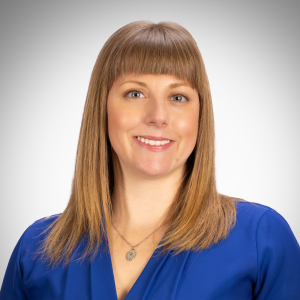If you have spider or varicose veins, then you’re not alone. The U.S. Department of Health and Human Services estimates that 50 percent to 55 percent of adult women face abnormal leg veins and around 40 percent to 45 percent of men.
Many people don’t seek treatment because they’re embarrassed, not sure about the effectiveness of treatment, or are worried about the procedure being painful. Spectrum Health Medical Group Vein Center’s Christina Hopps, a certified physician assistant, who specializes in spider vein treatment, answers these questions.
Spider and varicose veins are both caused by poor valve function, typically in a person’s legs. To return to the heart, blood in the legs must travel up against gravity. To do this, it flows through one-way valves in the legs that open and close so blood can’t flow backward. When these valves weaken blood ends up pooling in the vein causing an increase in pressure and enlarging the vein.
Varicose veins are large, raised, swollen blood vessels that twist and turn. They usually develop in the legs and can be seen through the skin.
Spider veins are a milder form of varicose veins. They are smaller, red, purple, and blue vessels that also twist and turn. Spider veins are easily visible through the skin, as well. They are typically visible on the legs and face.
Factors causing varicose veins include age, pregnancy, obesity, lack of movement, and sun exposure.
Varicose veins are rarely life or death, but depending on the cause, they can increase serious risks.
Generally, they cause burning, aching pain. Your legs can feel heavy and fatigued. They can swell, making the skin itchy and irritated from compromised circulation. Daily activities can become painful, or you may even avoid doing them. This affects the quality of life and a healthy activity level. If you have a venous disease and don’t treat it, more dangerous risks, such as blood clots, can occur.
Varicose veins may be an early symptom of something else. In many cases, there is a lot more to it than just a cosmetic problem.
Here are ways people can reduce their risk for varicose veins and spider veins:
- Wear sunscreen
- Walk or run regularly to strengthen muscles and circulation
- Maintain a healthy weight to allow optimal blood flow
- Elevate legs when resting
- Wear compression stockings
There are special treatments for people who want to rid themselves of these veins:
Ablation procedures: minimally invasive procedure to treat varicose veins. More recent therapies don’t even require compression stockings post-op, which is an excellent option for summer. These procedures have no downtime, so you can immediately return to your normal activities.
Sclerotherapy: In this procedure, I inject spider veins with a solution that scars and closes those veins. In a few weeks, treated veins should fade. Although the same vein may need to be injected more than once, sclerotherapy is effective if done correctly. Sclerotherapy doesn't require anesthesia and can be done in your doctor's office.
Spectrum Health offers treatment at the following locations:
Spectrum Health Medical Group Vein Center
4069 Lake Drive SE, Suite 114
Grand Rapids, MI 49546
Spectrum Health Specialty Care - 1845 Holton Rd
1845 Holton Rd
Muskegon, MI 49445
For more information, please call 616.267.VEIN or visit spectrumhealth.org/veincenter.
Medical Moment is sponsored by Spectrum Health.




